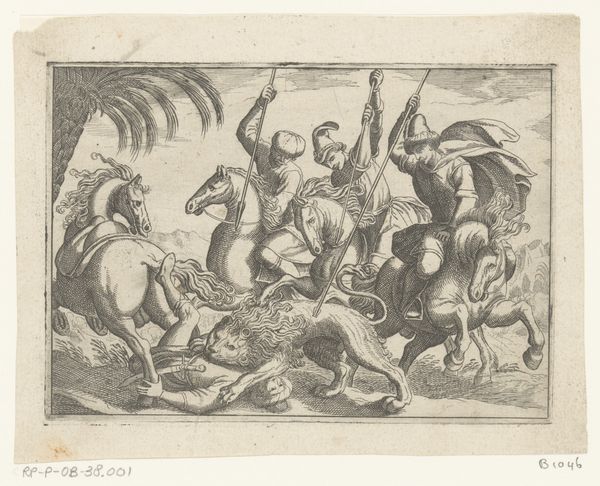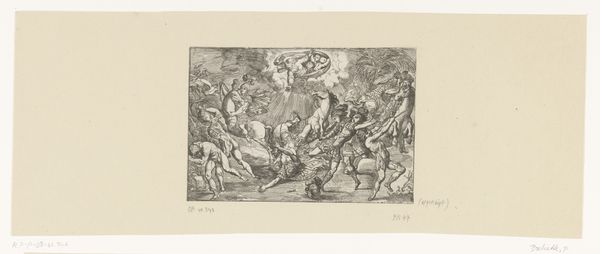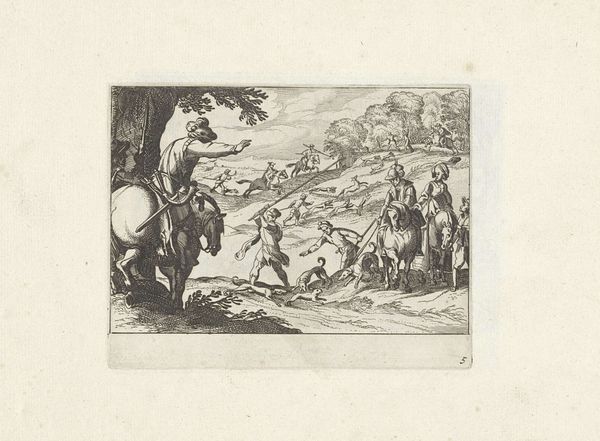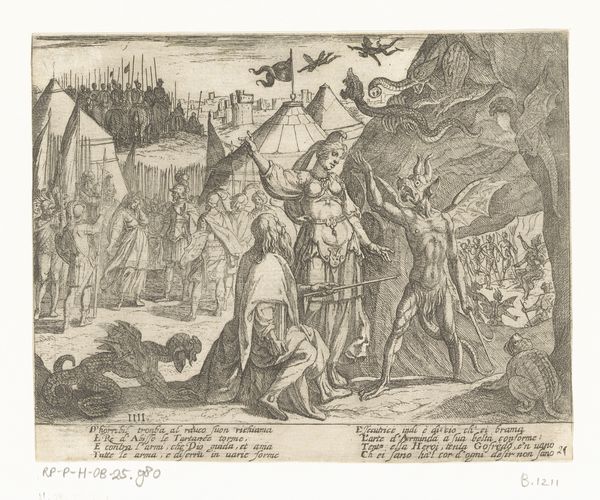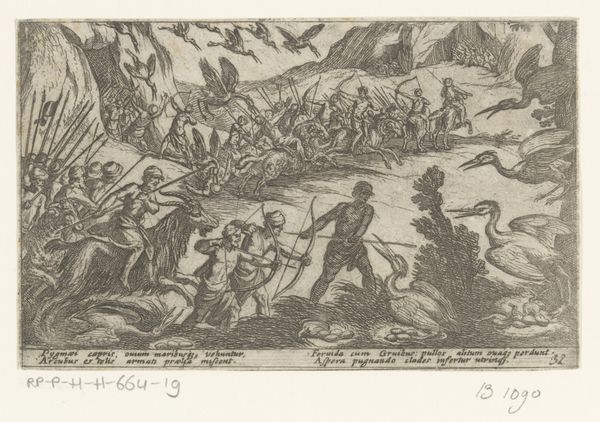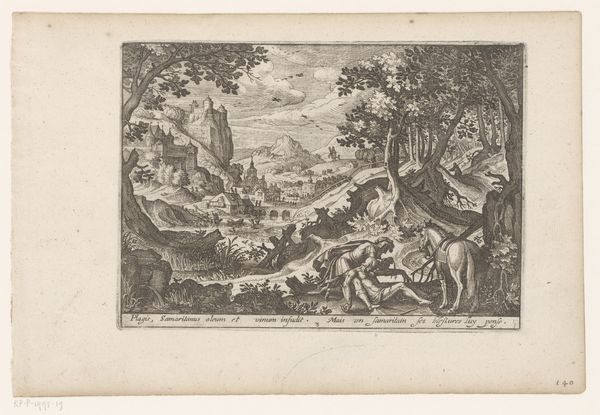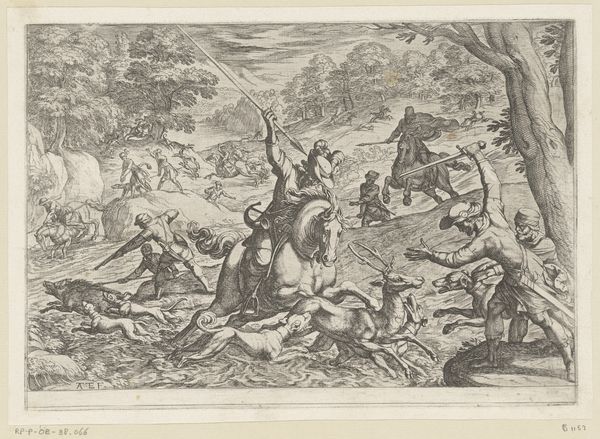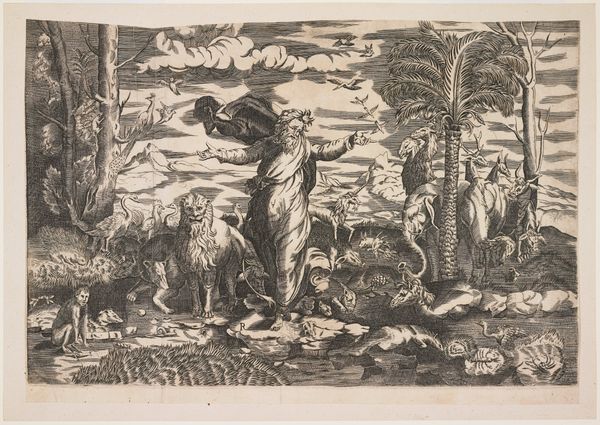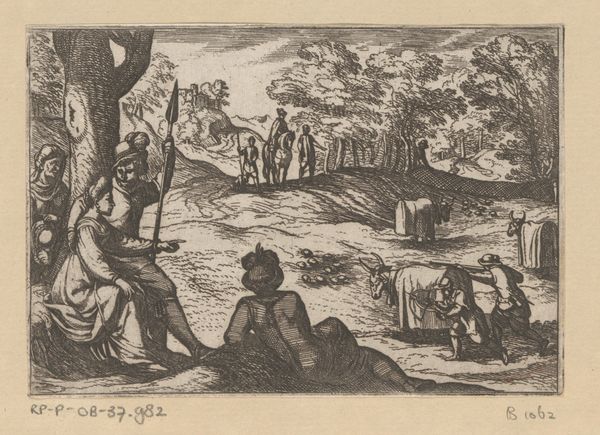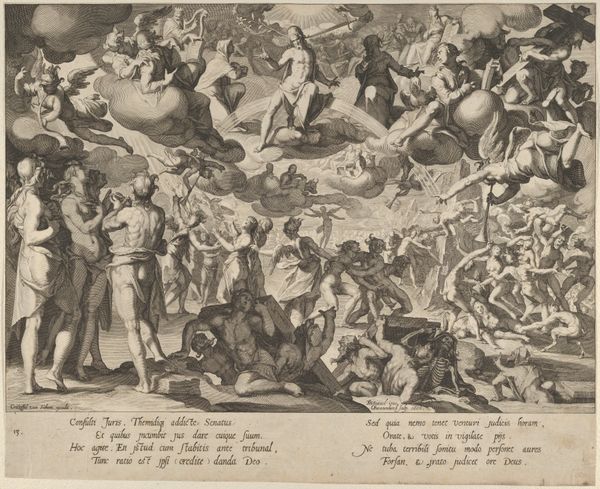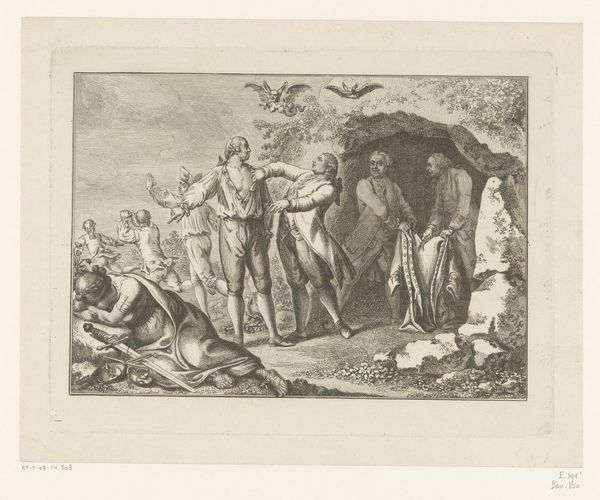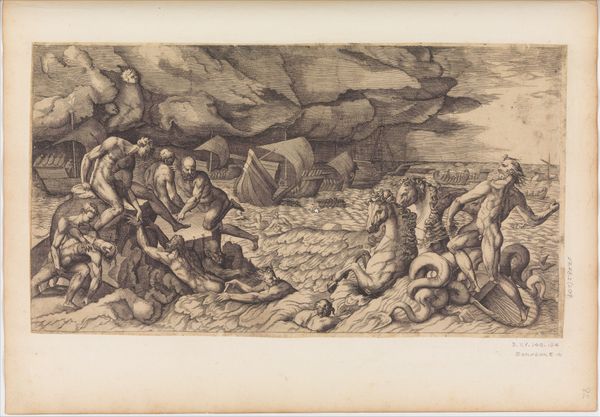
#
light pencil work
#
pen sketch
#
pencil sketch
#
old engraving style
#
personal sketchbook
#
ink drawing experimentation
#
pen-ink sketch
#
ink colored
#
pen work
#
sketchbook drawing
Dimensions: height 96 mm, width 270 mm
Copyright: Rijks Museum: Open Domain
Curator: Look at the whirlwind of conflict in Antonio Tempesta's 1599 print, "Leger een fort aanvallend," held here at the Rijksmuseum. The frantic energy leaps right off the page. What's your immediate reaction to it? Editor: The raw intensity, definitely. It looks like a battlefield exploding into chaos, with frantic figures and smoky turmoil, but also a strangely detached feeling given the fineness of the line work. The detail invites closer scrutiny and stands in sharp contrast to the brutal reality it represents. Curator: Absolutely. And that fineness is crucial, isn’t it? Tempesta has masterfully rendered the clash of armies with remarkably precise strokes. Look at how he uses densely packed figures to create a sense of overwhelming force, countered by the detailed rendering of individual soldiers and horses. There is a tradition here, one where warfare itself has cultural cachet. Editor: The material production interests me—what was the status of the artist making scenes like this, and what did that printing process entail? Considering its relatively small scale, its potential dissemination as print provides insight into both martial ambition and perhaps fears associated with contemporary sieges and territorial disputes. Curator: Indeed. While battlefield imagery throughout history often served to glorify the victor, what I see here—particularly through its proliferation via printmaking— is the attempt to codify visual understanding about power. This scene becomes a memory palace of military strategy, almost divorced from true, bloody combat. Editor: That’s a stark interpretation. Focusing on materiality and reception, however, also raises the question of access and control. Was Tempesta commenting on the increasingly mechanized and 'professionalized' nature of warfare through this distancing? What kind of person could afford this, or want such a scene displayed, and how does their engagement relate to the violence on display? Curator: Those are potent questions. Viewing art of war across history reminds us we are often examining not necessarily objective events but a carefully curated collection of visual data – emblems, symbolism and carefully crafted stories all reinforcing particular ideals. Editor: Agreed. Examining that curated image allows us to unpick what purpose it served in its original context but also its significance and legacy today, particularly as art becomes digitized, consumed, and contested globally. Curator: A somber note, but a relevant one, to end on as we consider "Leger een fort aanvallend".
Comments
No comments
Be the first to comment and join the conversation on the ultimate creative platform.
